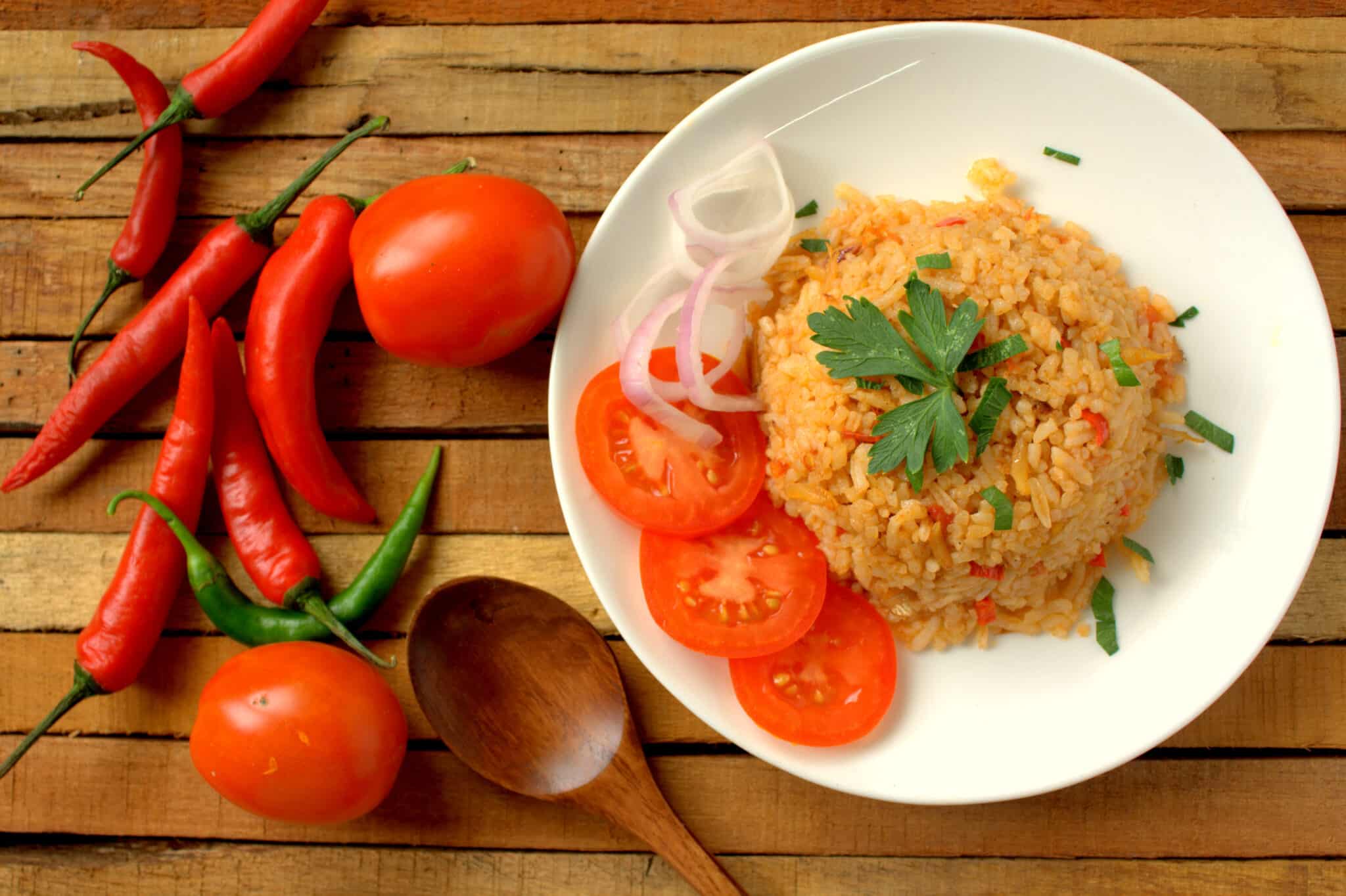
Jollof rice, a vibrant dish savored across West Africa, is the heart of Sierra Leonean cuisine. This one-pot wonder, with its rich flavors and enticing aroma, has a unique story to tell.
Our team at Remitly created this guide as part of our series that celebrates the traditional foods of our global customers.
The Origin of Jollof Rice
The history of Jollof rice is as colorful as the dish itself. It’s believed to have originated from the Senegambia region during the reign of the Jolof Empire—hence its name. However, each country in West Africa has adapted it to their local taste and ingredients.
Over time, this humble rice dish has become an integral part of West African culture. It’s not just food—it’s a symbol of unity, tradition, and national pride.
Jollof Rice in Sierra Leone
Sierra Leonean Jollof rice stands out for its distinct flavor profile. The key ingredients include parboiled rice, tomatoes, onions, bell peppers, and a blend of spices. In Sierra Leone, fish is the most common protein added.
Palm oil gives it a unique taste and reddish color. Scotch bonnet peppers add heat, while vegetables like carrots and peas bring color and texture.
Sierra Leonean Jollof Rice Recipe
This recipe will guide you through the process of making authentic Sierra Leonean Jollof rice. It serves four people and takes about two hours to prepare and cook.
Ingredients
- 2 cups of parboiled rice
- 4 large tomatoes, blended
- 1 large onion, chopped
- 1 bell pepper, chopped
- 2 Scotch bonnet peppers, finely chopped (optional)
- 1 cup of mixed vegetables (carrots and peas)
- 500g of chicken or fish, cut into pieces
- 3 tablespoons of palm oil
- Salt to taste
- A blend of spices: curry powder, thyme, garlic powder
Instructions
- Marinate the chicken or fish with salt and spices for at least an hour.
- In a large pot, heat the palm oil over medium heat.
- Add the onions and sauté until they become translucent.
- Add the bell pepper and Scotch bonnet peppers to the pot and stir for a few minutes.
- Add the blended tomatoes to the pot and let it simmer until it reduces in volume.
- Add your marinated chicken or fish to this mixture and let it cook until tender.
- Rinse your parboiled rice under cold water then add it to the pot along with your mixed vegetables.
- Pour in enough water or broth to cover the rice by about an inch.
- Cover your pot tightly with a lid and reduce heat to low allowing everything to simmer slowly together.
- After about thirty minutes check on your rice; if it’s cooked but still wet leave uncovered on low heat till dry.
Remember that cooking is an art—feel free to adjust ingredients according to personal preference.
Variations Across West Africa
Jollof rice may be universal in West Africa, but each country adds its unique twist. Nigerian Jollof, for instance, uses long-grain parboiled rice and is often smoky in flavor. Ghanaian Jollof uses basmati rice and has a lighter color.
Senegalese Jollof, known as Thieboudienne, includes fish and a variety of vegetables. Despite these variations, the spirit of Jollof remains the same—uniting people through food.
Popular Pairings with Jollof Rice
Jollof rice can be enjoyed on its own, but it’s often paired with side dishes for a complete meal. Fried plantains add sweetness, while coleslaw or salad provides freshness against the spicy rice.
Grilled chicken or fish are popular protein accompaniments. Regardless of what it’s paired with, Jollof rice remains the star attraction on any dining table.
Debates and Controversies
The popularity of Jollof rice has sparked friendly rivalries among West African countries—especially between Nigeria and Ghana—over who makes the best version. These debates often take center stage at social gatherings and online platforms creating buzz around this beloved dish.
While these debates are mostly light-hearted banter, they highlight the deep-rooted love for this dish across borders.
All about Sierra Leone’s Cuisine
Sierra Leonean cuisine is as diverse as its culture—a fusion of indigenous practices with Arab, British, and Creole influences. It’s characterized by hearty stews, flavorful rice dishes, and an abundance of fresh fruits and vegetables.
Staple Foods
Rice is the staple food in Sierra Leone. It’s often served with a variety of sauces made from greens, okra, groundnuts, or cassava leaves. These sauces are typically accompanied by fish or meat.
Cassava in its various forms—tubers, leaves or flour—is also widely consumed. Sweet potatoes, yams, and plantains are other popular staples.
Popular Dishes
Apart from Jollof rice, other well-known dishes include “plassas” (meat or fish stew), “fufu” (mashed cassava), and “akara” (fried bean cakes).
“Freetown garden egg stew”, made with aubergines and palm oil is another favored dish. For dessert, “binch akara” (fried sesame balls) is often enjoyed.
Street Food Culture
Street food plays a significant role in Sierra Leonean cuisine. Roasted corn or peanuts, grilled fish wrapped in banana leaves and skewered meat are common sights on the streets of Freetown—the capital city.
Sierra Leonean cuisine reflects the country’s rich cultural diversity—a blend of flavors that tells a story of tradition and adaptation.
Visit the homepage, download our app, or check out our Help Center to get started.